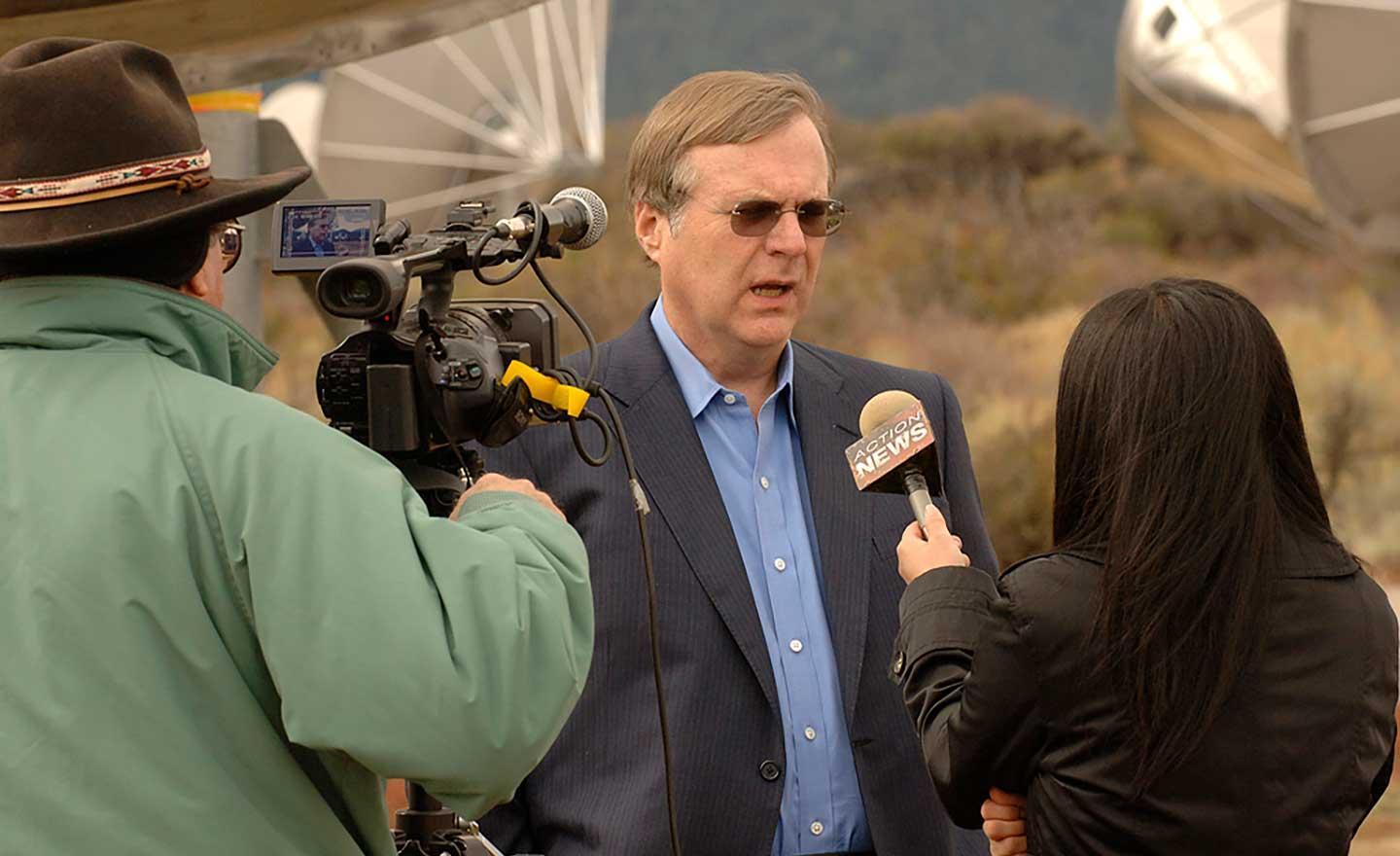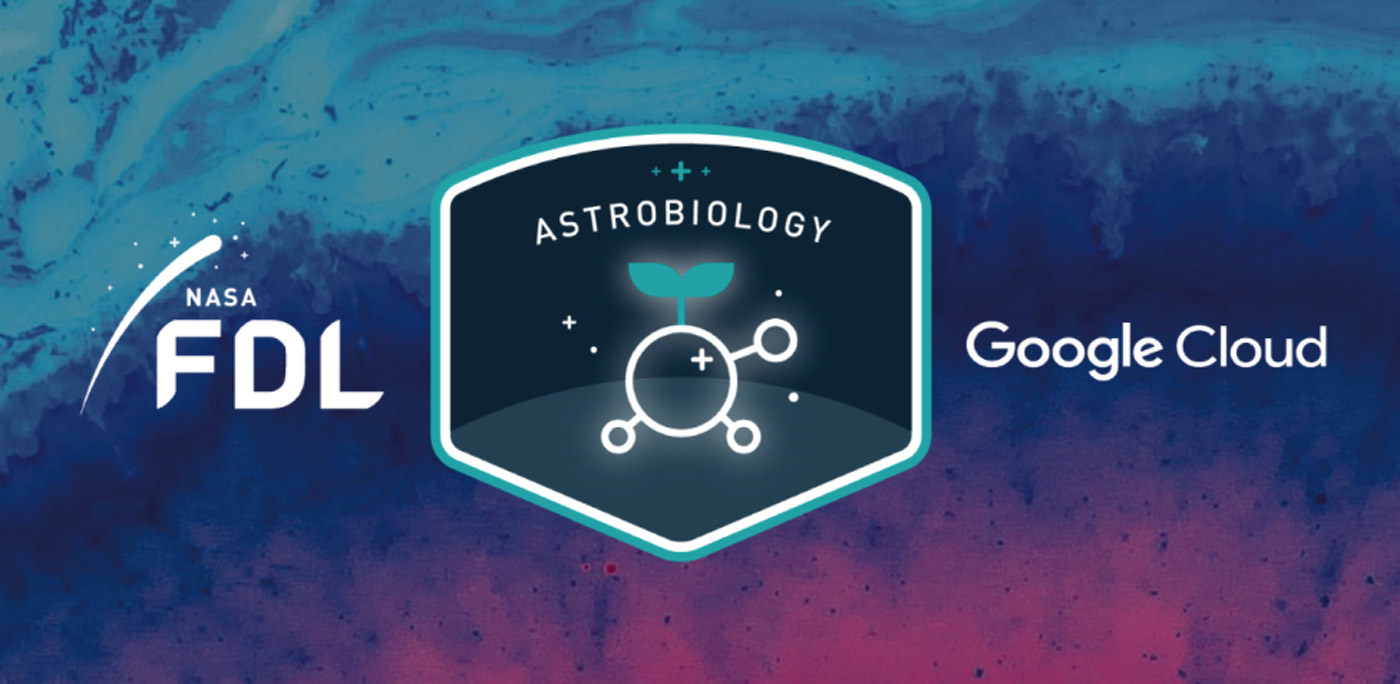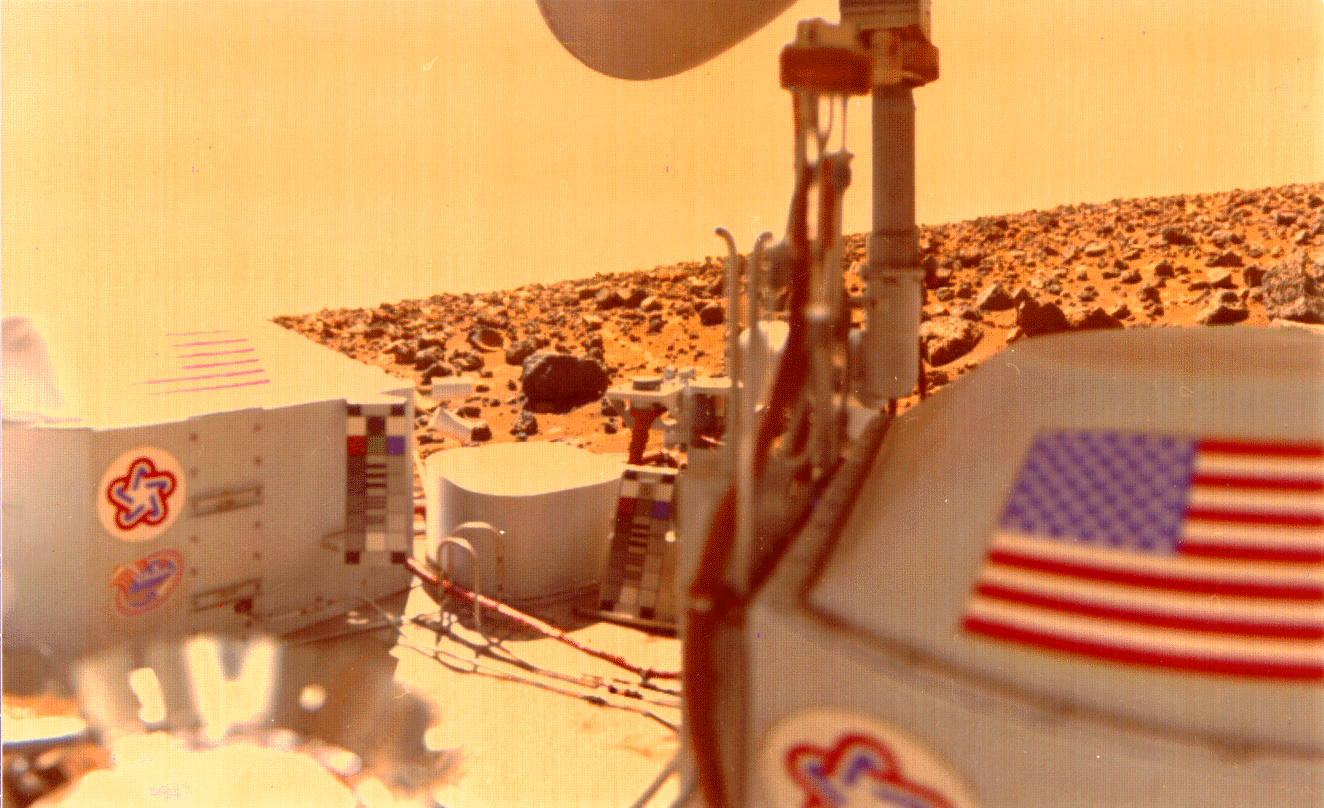
Paul Allen, technologist, entrepreneur, and philanthropist, died in Seattle on October 15 from non-Hodgkins lymphoma.
Paul may be best known for co-founding Microsoft, but he made an incredible contribution to the SETI Institute by providing funding to build the Allen Telescope Array (ATA), a 42-dish array used by the SETI Institute every day to search for narrow-band signals from other star systems, signs of extraterrestrial technology.
Upon learning of Paul’s passing, SETI Institute co-founder Jill Tarter tweeted: “Sadly, Paul Allen passed away this afternoon. I’m sorry that he won’t see all the things that the Allen Telescope Array will yet do.”
SETI Institute President and CEO Bill Diamond remarked, “Paul was, like a lot of very intelligent, and curious and science-minded individuals, fascinated with the question “Are we alone?”
Seth Shostak, Senior Astronomer at the SETI Institute, was part of the team that accompanied Paul to the ATA for its unveiling. He said that when he asked Paul why he was making this investment, Paul replied, “I’m always interested in the possibility of new, exciting discoveries made possible by developments in technology.”
- SETI.org: Paul G. Allen 1953 – 2018
- ABC-7: Microsoft co-founder Paul Allen leaves Bay Area legacy
- Space.com: Spaceflight, SETI Communities Mourn Passing of Paul Allen
 Who is Dr. Pascal Lee?
Who is Dr. Pascal Lee?Dr. Pascal Lee is a Planetary Scientist at the SETI Institute. He is also Chairman of the Mars Institute, and Director of the NASA Haughton-Mars Project at NASA Ames Research Center in Mountain View, California. His research focuses on the history of water on Mars and on planning the future human exploration of Mars. Dr. Lee has led over 30 expeditions to the Arctic and Antarctica to study Mars by comparison with the Earth. He also studies asteroids and the two moons of Mars.
He got interested in space through watching TV shows including Star Trek and Lost in Space as a child in Hong Kong; he applied three years in advance to do his French military service in Antarctica, and is a FAA-certified helicopter flight instructor.
In a wide-ranging interview with John Martellaro on his podcast TMO Background Mode, Pascal discussed the science he does on his annual field expeditions to Devon Island in the Arctic to advance Mars science and exploration. For instance, this past summer’s work included testing field science and exploration operations for an airplane designed at NASA Langley Research Center that takes off and lands vertically and is able to fly long distances horizontally.
- The Mac Observer: TMO Background Mode Interview with Planetary Scientist Dr. Pascal Lee
 NASA Frontier Development Lab and Google Cloud Searching for Life on Other Planets
NASA Frontier Development Lab and Google Cloud Searching for Life on Other PlanetsLast summer’s NASA Frontier Development Lab (FDL), an applied artificial intelligence research accelerator and public/private partnership between NASA Ames Research Center and the SETi Institute, included two astrobiology challenges to advance understanding of whether there are other planets that could support life:
- Understanding what is universally possible for life: simulating possible atmospheres on distant planets
- From biohints to evidence of life – possible metabolisms within extraterrestrial environmental substrates: generating a spectral dataset of over 3 million rocky terrestrial exoplanets with machine learning
Google Cloud was one of the sponsors of the exoplanet teams which used Google Cloud technology to address their challenges.
In a recent blog post, FDL mentor Massimo Mascaro, Technical Director of Applied AI in the Office of the CTO for Google Cloud, outlined some of the results.
- Google Cloud: Is there life on other planets? Google Cloud is working with NASA's Frontier Development Lab to Find Out
- FrontierDevelopmentLab.org: FDL 2018 Astrobiology
 Will NASA Join the Search for Alien Life?
Will NASA Join the Search for Alien Life?Last month, NASA brought leading scientists in the fields of astrobiology and SETI together to define the current state of the technosignature field, understand advances that are coming, understand the future potential of the technosignature field, and define what role NASA partnerships with private sector and philanthropic organizations can play. The SETI Institute was one of the participants, with presentations from Jill Tarter (SETI Institute co-founder and Chair Emeritus for SETI at the SETI Institute), Bill Diamond (President and CEO of the SETI Institute), Eliot Gillum (Director of Optical SETI at the SETI Institute), and Andrew Siemion (Bernard M. Oliver Chair for SETI at the SETI Institute). All presentations were recorded and can be heard here.
Now, in a report released by the National Academies of Sciences, Engineering and Medicine (NAS), An Astrobiology Strategy for the Search for Life in the Universe, NAS is recommending that NASA make the search for alien life a core facet of its space exploration work.
- Scientific American: Search for Alien Life Should Be a Fundamental Part of NASA, New Report Urges
 Off-the-Shelf AI for SETI?
Off-the-Shelf AI for SETI?This week Andrew Siemion, Bernard M. Oliver Chair for SETI at the SETI Institute and Director of the Berkeley SETI Research Center, will be presenting at the VB Summit 2018 where the theme is “Accelerating your business with AI.”
Historically, the relationship between the tech sector and the Search for Extraterrestrial Intelligence (SETI) is deep and remains so. Indeed, when Frank Drake, Chair Emeritus at the SETI Institute, conducted the first SETI experiment in Green Bank, West Virginia in 1960, Barney Oliver, CTO for Hewlett-Packard, showed up to help. Oliver became deeply engaged with SETI research and later became a member of the SETI Institute’s Board of Trustees.
Today, Siemion is looking for ways to use the most cutting-edge technologies, including AI and machine learning, to advance the search.
“We use gaming GPU’s,” says Siemion. “We use the GeForce series from Nvidia. We use consumer level flash drives. . . We made a joke on Twitter that we were building a new gaming system, when in fact we’re prototyping a digital spectrometer for a new radio telescope. It’s literally stuff that you buy at Best Buy.
The kind of searches we do are motivated by what our technology does now. When we invented radio transmitters, we started looking for radio signals. When we invented lasers, we started looking for laser signals. When we invented AI, we started thinking about searching for artificially intelligent life.”
In this week’s episode, that smell in the air could be the key to survival of our species in Air Apparent. On last week’s episode, DNA is no longer a fait accompli in DNA Is Not Destiny.
Last week on Facebook Live, SETI Institute President and CEO Bill Diamond shared what it’s like for our Airborne Astronomy Ambassadors during their flight week on NASA’s SOFIA aircraft. Videos of all past Facebook Live events can be found on our Facebook page: https://www.facebook.com/SETIInstitute/
- Division for Planetary Sciences (DPS) 50th Annual Meeting: October 21-26, Knoxville, TN Numerous SETI Institute Scientists will be participating including: Chloe Beddingfield, Ross Beyer, Michael Busch, Richard Cartwright, Matija Ćuk, Cristina Dalle Ore, Paul Estrada, Robert French, Pamela Harman, Franck Marchis, Stuart Pilorz, Alessandra Ricca, Joseph Roser, Mark Showalter, Matthew Tiscareno, and Orkan Umurhan.
- VB Summit 2018: October 22-23, Mill Valley, CA Andrew Siemion, Bernard M. Oliver Chair for SETI at the SETI Institute will present “Forget Building Your AI Project. Buy It Off the Shelf.”
- NASA’s Kepler & K2 Missions: October 24, Bremerton, WA Jeff Coughlin, SETI Institute scientist and Director of the K2 Science Office, will giving a public talk at Olympic College in Bremerton, WA.
- Gully Formation on Mars: Did Water Play a Role: October 26, Santa Cruz, CA SETI Institute Senior Research Scientist Virginia Gulick will present
- The Undiscovered: October 26, Cambridge, MA Jill Tarter, Chair Emeritus for SETI Research at the SETI Institute will be a keynote speaker
- Toward an All-Sky Radio SETI Telescope: October 29-31, Manchester, UK Jill Tarter, Chair Emeritus for SETI Research at the SETI Institute is a member of the Scientific Organizing Committee
- 2018 Solar Dynamics Observatory Science Workshop: Catalyzing Solar Connections: October 29-November 2, Ghent, Belgium SETI Institute Research Scientist Meng Jin is a member of the Science Organizing Committee
- Celebrating Stephen Hawking – How Black Holes are not Quite Black: November 1, San Francisco, CA Andrew Fraknoi, who serves on the SETI Institute’s Board of Trustees, will give a non-technical talk
- Earth Impacting Debris from Comets and Asteroids: November 9, Los Angeles, CA: Talk presented by SETI Institute scientist Peter Jenniskens at UCLA
- World Premiere – The Sound of Silence: November 10, Brooklyn, NY Concert featuring new work composed by SETI Artist-in-Residence Felipe Pérez Santiago and inspired by the work of Jill Tarter, Chair Emeritus for SETI at the SETI Institute
- Cassini’s Spectacular Final Year at Saturn: November 13, Palo Alto, CA SETI Institute Senior Research Scientist Matthew Tiscareno will present
- Science Film Festival – Contact: November 18, Berkeley, CA A screening of the film Contact with introduction by Jill Tarter, SETI Institute co-founder and inspiration for the character of Ellie Arroway in the film





